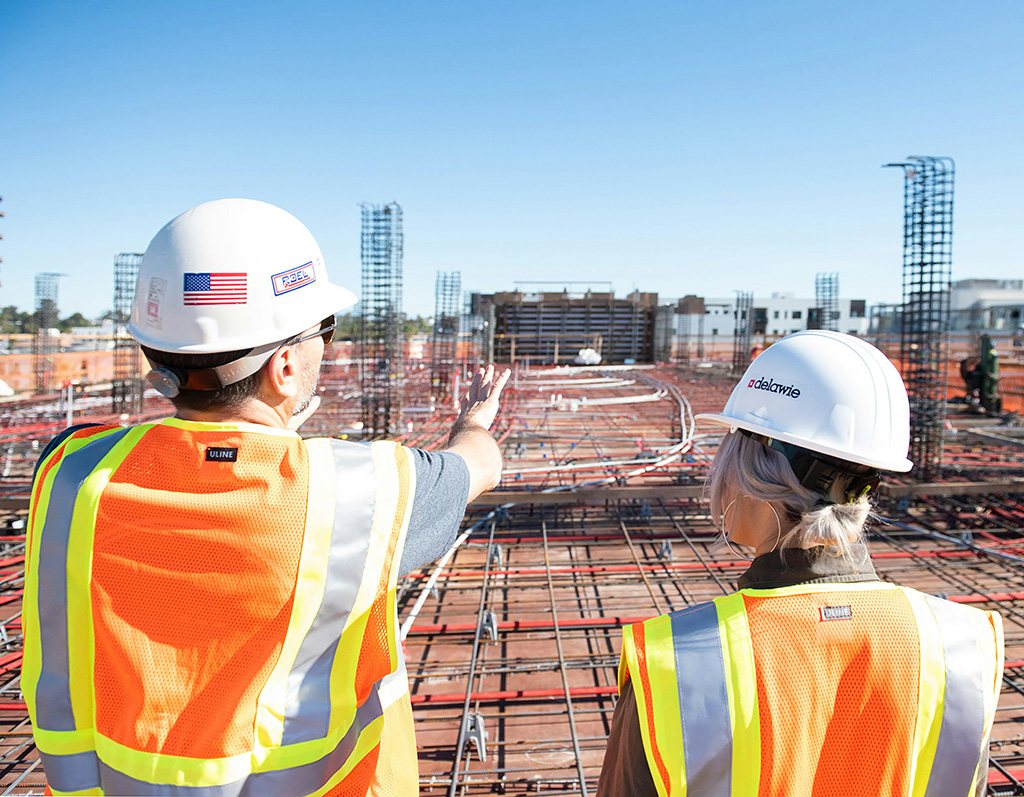In the construction industry, where the dynamic interplay of manpower and machinery shapes the skylines of tomorrow, safety transcends beyond a mere checklist—it becomes a culture. At the heart of every successful project lies a commitment to protecting every individual involved, from the engineers drafting the blueprints to the laborers on the ground. This blog post delves into the paramount importance of jobsite safety and the proactive measures necessary to ensure a hazard-free environment.
Wear Personal Protective Equipment (PPE): Always wear the appropriate PPE for the task at hand, including helmets, safety glasses, high-visibility vests, and steel-toed boots to protect against workplace hazards.
Stay Informed and Trained: Regularly participate in safety training sessions and stay updated on the latest safety protocols and emergency response procedures to minimize risks.
Report and Address Hazards: Proactively identify and report potential safety hazards to prevent accidents. Encourage a culture where everyone feels responsible for maintaining a safe work environment.
The Foundation of Safety
Safety on a construction site is multifaceted, encompassing everything from personal protective equipment (PPE) to rigorous training programs. It starts with the basics: hard hats, safety glasses, high-visibility clothing, and steel-toed boots form the first line of defense against potential hazards. But true safety goes deeper, weaving into the very fabric of operations through comprehensive risk assessments and safety protocols.
Education and Training: The Cornerstones of a Safe Jobsite
Knowledge is power, particularly when it comes to preventing accidents. Regular, in-depth training sessions are crucial, equipping teams with the knowledge to recognize risks and the competence to act swiftly and effectively.
An essential aspect of maintaining a high standard of safety on any job site is ensuring that team members are OSHA-30 trained. This comprehensive training program, developed by the Occupational Safety and Health Administration (OSHA), equips workers and supervisors with critical knowledge and skills to identify, prevent, and mitigate job site hazards. Over the course of 30 hours, participants delve into various topics ranging from fall protection and personal protective equipment to hazardous materials handling and emergency response. By ensuring that our team members have completed the OSHA-30 training, we’re not just complying with regulations—we’re fostering a culture of safety and responsibility that transcends the minimum requirements, setting a new benchmark for safety excellence in the industry.
The Role of Technology in Safety

Advancements in technology offer new avenues to bolster safety measures. From wearable devices that monitor vital signs and fatigue levels to drones that conduct site surveys from a safe distance, technology is a game-changer. Moreover, software solutions facilitate better communication and coordination, ensuring that safety protocols are adhered to and hazards are promptly addressed.
A Culture of Accountability
Creating a safe jobsite is a collective responsibility. It requires a culture where everyone feels empowered to speak up about unsafe conditions and where safety recommendations are not just heard but acted upon. Leadership plays a key role in fostering this environment, demonstrating a commitment to safety that inspires others.
Continuous Improvement: The Path Forward
Jobsite safety is not a static goal but a continuous journey. It demands regular reviews and updates of safety practices, learning from near-misses, and adapting to new challenges and regulations. It’s about striving for a zero-incident workplace through diligent planning, constant vigilance, and an unwavering commitment to improvement.
Conclusion
At its core, jobsite safety is about valuing human life and well-being above all else. It’s a critical aspect that demands attention, investment, and dedication from every level of an organization. By prioritizing safety, we not only protect individuals but also enhance the overall success and reputation of our projects and the construction industry at large. Safety is not just a regulatory requirement; it’s the foundation upon which we build our future.



